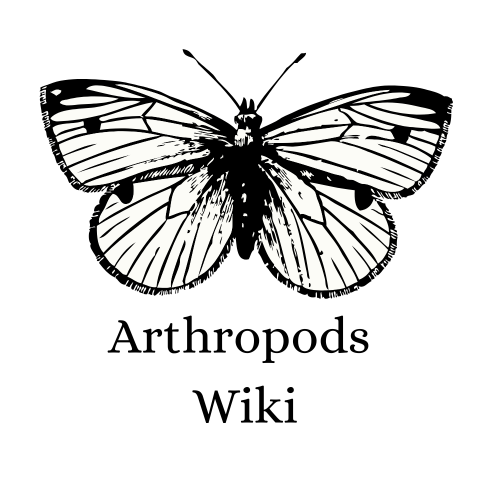| Pachnoda sinuata | |||
|---|---|---|---|

| |||
| Nomenclature | |||
| Binomial name | Pachnoda sinuata Fabricius, 1775 | ||
| Common name | Yellow-bellied sun beetle | ||
| Native name | African fruit chafer | ||
| Other names | Garden fruit chafer, Forest fruit chafer; Brown-and-yellow fruit chafer | ||
| Taxonomy | |||
| Phylum | Arthropoda | ||
| Order | Coleoptera | ||
| Suborder | Polyphaga | ||
| Superfamily | Scarabaeioidea | ||
| Family | Scarabaeidae | ||
| Subfamily | Cetoniidae | ||
| Tribe | Cetoniini | ||
| Genus | Pachnoda | ||
| Species | Pachnoda sinuata | ||
| Conservation status | Not Evaluated | ||
Pachnoda sinuata, also known by the name of Yellow-bellied sun beetle, forest fruit chafer, Garden fruit chafer, African fruit beetle or brown and yellow fruit chafer[1][2] is an Afrotropical species of fruit chafer native to South Africa and Congo.
Morphology[]
P. Sinuata is an attractive species of beetle, reaching a relatively petite size of roughly 25 mm on average,[3] and have a smooth, somewhat flattened dorsal surface which is dark-green or black in colouration with irregular, vivid; conspicuous yellow margins which form irregular patterns as they intricately stretch across the dorsal surface, forming a transverse yellow line at the opisthosoma stretching across the elytra , the margins are also strudded with large dark-green blotches present in pairs on the pygidium, parallel to the sternum and on the prosoma. The prosoma can be distinguished by the varying yellow markings just above the head. The heads are somewhat quadrate and the antennae are short, elbowed and lamellate (a common characteristic applied to all species of fruit chafers). The ventral surface is a very bright and conspicuous yellow colouration.[2]
Ecology[]
Life cycle[]

The beetles will emerge all year around, peak egg-laying periods occur from June till August and an average of 50 eggs are laid per batch, with an incubation period of 7-12 days, the eggs are deposited in manure heaps and rotting wood.[4]the larvae are Saproxylic-Xylophagous and feed off rotting wood but will accept manure and other organic matter as an inclusion to their regular diet,[3]Larval instars last from 80-140 days and is noticeably shortened by the addition of cattle-dung to their diet.[4]The larvae will construct pupation chambers out of clay-like agents, pupal development takes about 25-100 days, during which th larval skin is shed into the scletorized pupal skin, the adults emerge depending on the time of pupation and can live for over an year.[4]
Diet and feeding[]
fruit chafers have relatively well-developed mouthparts specialised for feeding on organic plant matters such as fruits, flowers, sap and occasionally pollen. Adult beetles feed on flowers and fruit, often destroying them in the process which makes them unpopular with gardeners. While commonly found on exotic plants like roses and camellias, these beetles also feed on a range of indigenous plants including Acacia.[5] the larvae are saproxylic.
Defence mechanism[]

P. s. flaviventris
The foremost pair of wings is modified into hard chitin casing which protects the delicate hind wings folded intricately underneath the elytra, the hard chitin material with which the elytra are constructed is relatively tough and rigid making it quite difficult to destroy. Another plausible theory which may aid the beetles survival is the colouration, in spite of being relatively conspicuously coloured, the colouration is reminiscent to foliage and flower’s which may allow camouflage.[3]The very distinctive patterning of the pygidium could possibly be reminiscent to another animal, a form of mimicry.[5] one reasonable theory suggests that the vivid and conspicuous colouration is due to aposematism however there is no further evidence to prove this theory.[citation needed]
Predation[]
This species is a popular prey species for many species of bird, such as red-winged starlings and hadada ibises.[5]
Relationship with humans[]
In horticulture[]
P. sinuata is often regarded as a pest due to their tendency to feed off fruits which can have negative effects on agriculture, the beetle extracts the juices from the fruit spoiling it in the process, their affinity for feeding on exotic flowering plants and ornamental shrubbery such as roses and carnations makes them quite unpopular among farmers and gardeners.
Ecological role[]
The species has a relatively two-sided relationship with plants, as the imago is known to cause considerable amounts of damage to crops, fruits and flowers the larvae on the other hand, play an important role as a saproxylic species, recycling and converting dead wood and decaying plant matter into mulch, due to its tendency to feed off the aforementioned in addition to compost and manure.
Subspecies[]
- Pachnoda sinuata calceata
- Pachnoda sinuata flaviventris
- Pachnoda sinuata machadoi
- Pachnoda sinuata nicolae
- Pachnoda sinuata sinuata
Distribution[]
Geographical range[]
P. sinuata is widely represented in the Western Cape, especially in the orchard areas from Worcester to Somerset West, and has also been collected at Elands Bay. The species is also a relatively common occurrence around Milnerton, Pinelands, Beaufort West and even at Kuruman.[3]
Habitat[]
The species inhabits habitats and ecosystems where food is abundant and plentiful, areas sufficient in trees and shrubs, such as urban parks, orchards and gardens.
References[]
- ↑ https://pictureinsect.com/wiki/Pachnoda_sinuata.html
- ↑ 2.0 2.1 https://www.animal.photos/insect2/sun-yb.htm#:~:text=The%20Yellow%2Dbellied%20Sun%20Beetle,Congo%2C%20East%20and%20southern%20Africa.
- ↑ 3.0 3.1 3.2 3.3 https://www.sanbi.org/animal-of-the-week/garden-fruit-chafer/
- ↑ 4.0 4.1 4.2 https://journals.co.za/doi/pdf/10.10520/AJA03701263_986
- ↑ 5.0 5.1 5.2 https://en.m.wikipedia.org/wiki/Pachnoda_sinuata
